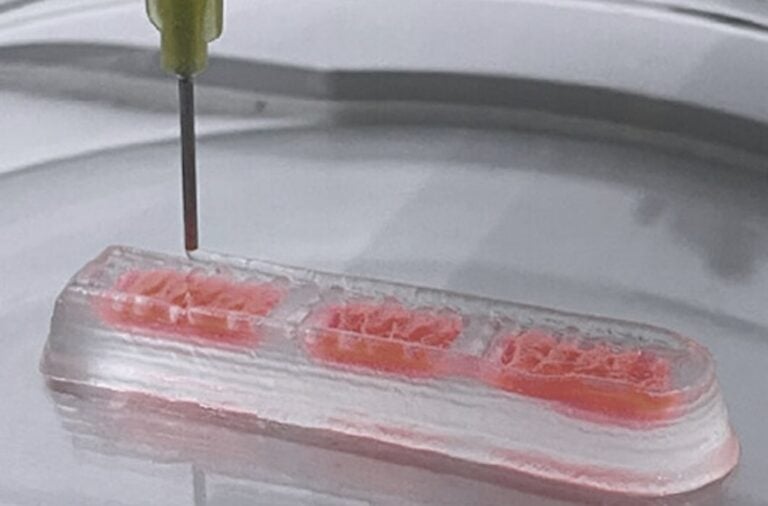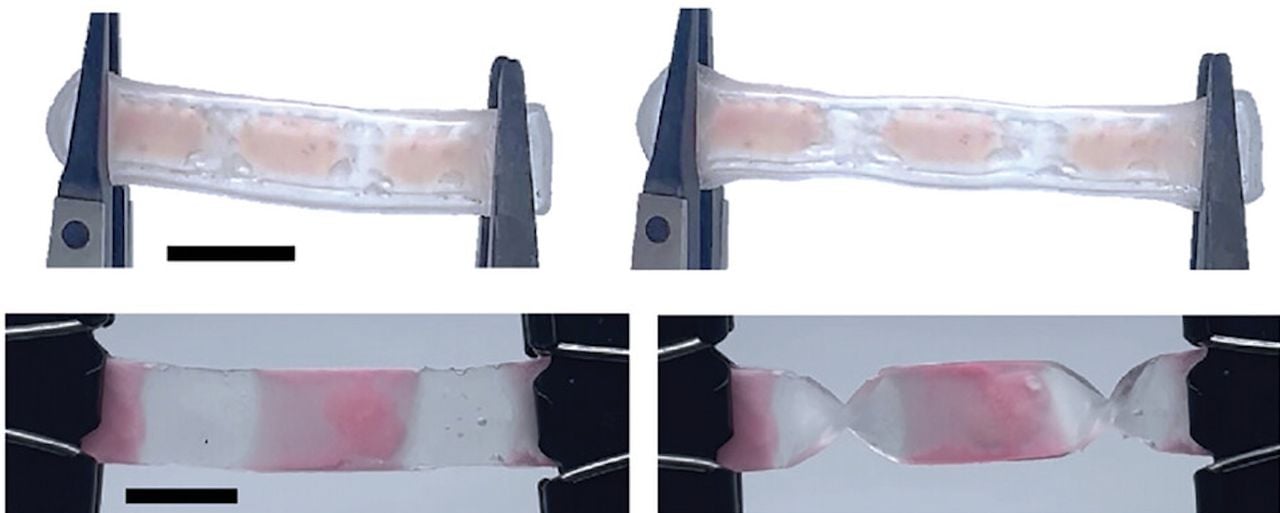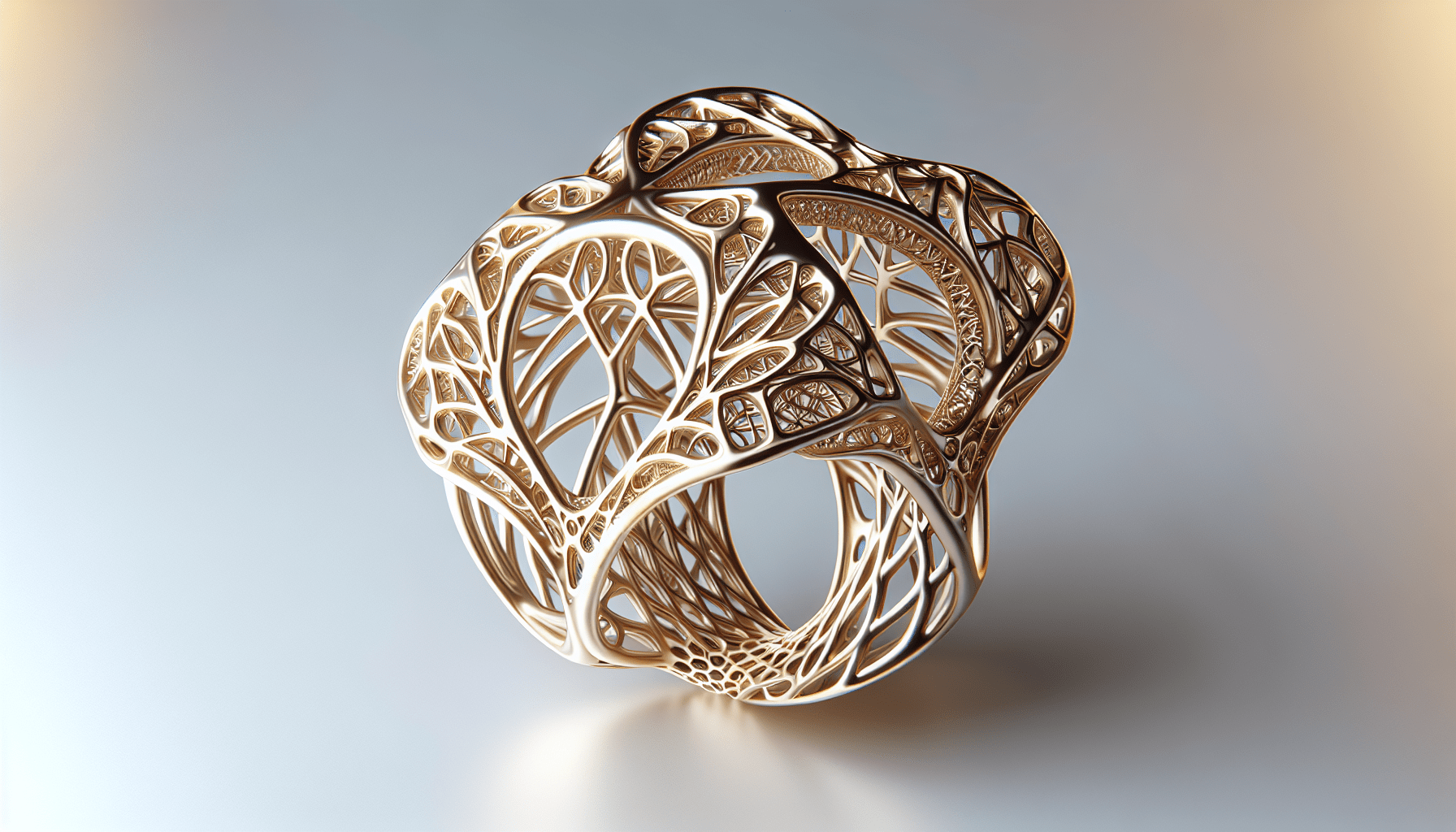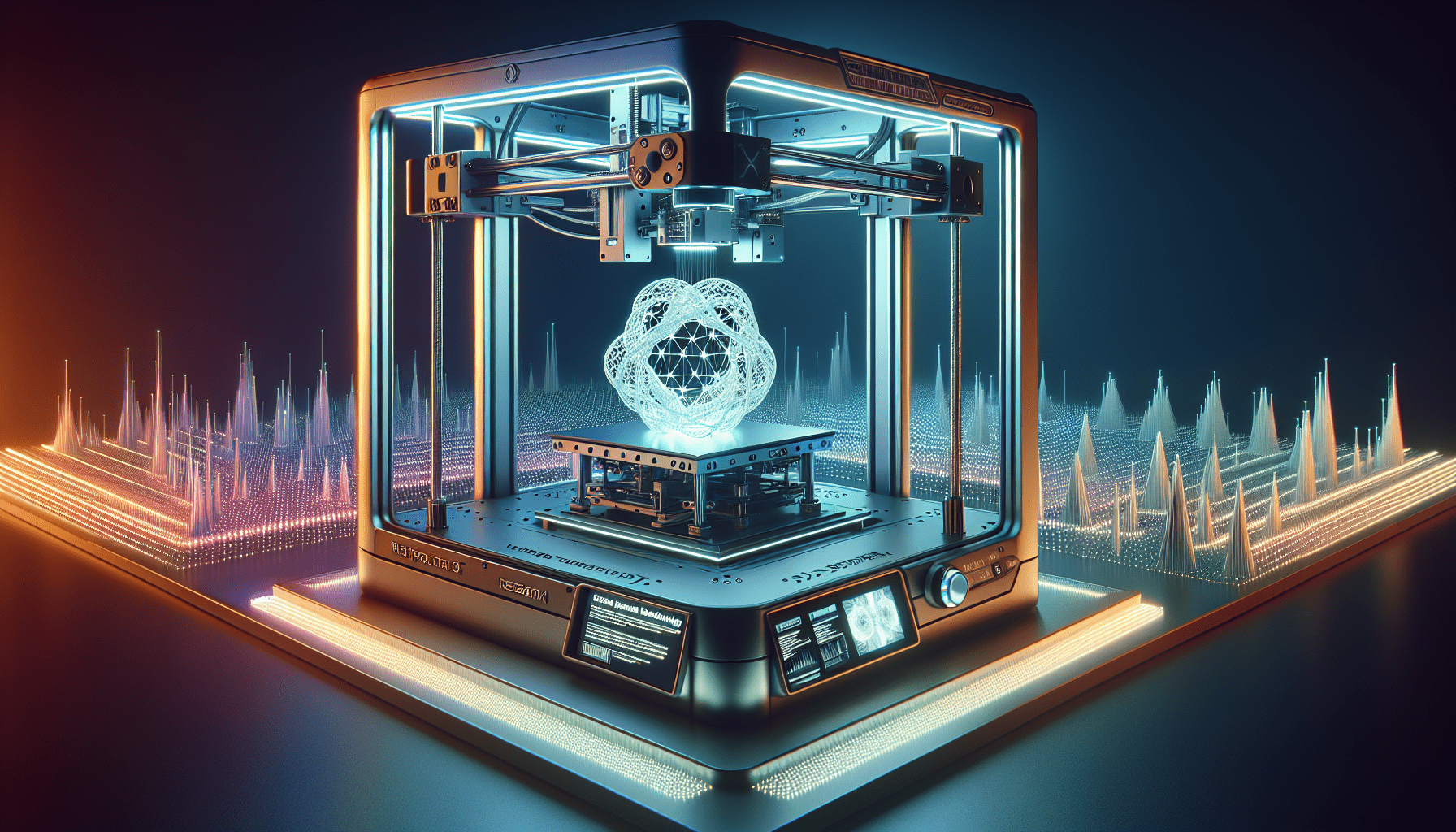Creality Ender 3 V3 SE 3D Printer, 250mm/s Faster FDM 3D Printers with CR Touch Auto Leveling, Sprite Direct Extruder Auto-Load Filament Dual Z-axis & Y-axis, Printing Size 8.66 * 8.66 * 9.84 inch
$229.00 (as of May 31, 2025 19:16 GMT +00:00 - More infoProduct prices and availability are accurate as of the date/time indicated and are subject to change. Any price and availability information displayed on [relevant Amazon Site(s), as applicable] at the time of purchase will apply to the purchase of this product.)This article explores an innovative direct ink writing method that allows for variable softness in 3D printed objects. Soft parts are becoming increasingly important in the field of robotics, as they enable robots to handle delicate objects with precision, much like human fingers. However, traditional elastomer materials used to create these soft parts have a consistent hardness throughout the object. The researchers developed a double network granular elastomer (DNGE) that enables the variation of hardness by formulating elastomers as microparticles using an emulsion of reagent-loaded oil in water. This breakthrough allows for the creation of objects with rigid internal structures and soft external skins, making them ideal for robotic applications.

Introduction
In recent years, there has been an increasing use of soft materials in robotic technologies, particularly in the development of end-effectors for robotic hands. Soft materials, such as elastomers, offer several advantages in handling fragile objects and mimicking the dexterity and sensitivity of human fingers. However, a major challenge in the use of elastomers in 3D printing is the inability to vary their hardness throughout an object. This limitation restricts their applicability in various fields, including robotics and bioprinting.
To address this challenge, researchers have developed a unique approach to direct ink writing called the Double Network Granular Elastomer (DNGE). This innovative method enables the variation of softness throughout a 3D printed object, allowing for the creation of complex structures with varying hardness. The DNGE approach involves the combination of two materials and the manipulation of their ratio and strength to achieve the desired engineering properties.
In this article, we will explore the background and challenges of using elastomer materials in 3D printing, the development and printability of DNGEs, the engineering properties and variations achieved through the DNGE approach, the complexity of the process and materials involved, and the potential applications of DNGEs in bioprinting and robotics.
Background
Increasing use of soft parts in robotic technologies
The use of soft materials in robotic technologies has been on the rise due to their unique properties and advantages. Soft parts, particularly end-effectors made from elastomer materials, offer improved flexibility, adaptability, and sensitivity compared to traditional rigid components. These soft parts are capable of handling a variety of objects, including fragile and irregular shapes, making them highly desirable for applications in robotics, prosthetics, and biomedical devices.
Challenges of using elastomer materials in 3D printing
Despite the increasing interest in soft materials for robotic technologies, there are significant challenges in their application in 3D printing. Elastomers, such as silicone-based materials, possess unique mechanical properties, including low modulus, high elongation, and good tear resistance. However, traditional 3D printing methods have limitations in achieving the desired mechanical properties, particularly the ability to vary the hardness or softness of elastomers throughout a printed object.
Regardless of the process used to 3D print or mold an elastomer, its properties remain the same throughout the object. This homogeneity in hardness limits the design possibilities and functional capabilities of elastomer-based structures. To overcome this limitation, researchers have explored various approaches, including combining multiple materials or developing hybrid materials that can be 3D printed with variable hardness. One such approach is the development of the Double Network Granular Elastomer (DNGE).
$30 off $400+ Anycubic Products with code AC30OFF
Double network granular elastomer (DNGE)
Development of DNGE for varying hardness
The development of DNGEs involves the combination of two materials that form a dual network within the printed object. This dual network is crucial in achieving the desired engineering properties, including the ability to vary the hardness throughout the structure. The development of DNGEs for varying hardness involves the formulation of elastomers as microparticles, using an emulsion of reagent-loaded oil in water.
The precise formulation of the microparticles and the manipulation of the ratio and strength of the dual networks enable the control of the material’s properties, particularly its hardness. By adjusting these parameters, researchers can create DNGEs with varying degrees of softness and rigidity, mimicking the mechanical properties of human tissues and enhancing the functionality of 3D printed objects.
Combination of two materials
The combination of two materials in the DNGE approach is critical in achieving the desired engineering properties. The first material acts as a filler or granular phase, providing the necessary mechanical integrity and strength to the printed object. The second material acts as a matrix or continuous phase, surrounding the granular phase and providing the desired softness or hardness.
The selection of these two materials is based on their compatibility, processability, and desired mechanical properties. The combination of the filler and matrix materials forms a dual network within the printed object, with each network contributing to the overall mechanical behavior and properties of the structure. By manipulating the composition and interaction of these networks, researchers can create DNGEs with a wide range of engineering properties.
Printability of DNGEs
One of the key advancements in the development of DNGEs is their printability using existing 3D printing technologies. The ability to 3D print DNGEs allows for the creation of complex structures with varying hardness, opening up new possibilities in design and functionality. DNGEs can be printed using a direct write process, which involves the dispensing of the material through a nozzle or extruder onto a printing platform.
The printability of DNGEs is influenced by several factors, including the rheological properties of the material, the nozzle size, the printing speed, and the printing temperature. Researchers have optimized these parameters to ensure the successful printing of DNGEs with the desired softness and rigidity. The ability to 3D print DNGEs on any bioprinter further expands their potential applications in bioprinting and tissue engineering.
Engineering properties
Contribution of dual networks to object properties
One of the key advantages of the DNGE approach is the contribution of the dual networks to the engineering properties of the printed object. The filler network, typically consisting of granular particles, provides the necessary mechanical strength and integrity to the structure. These granular particles act as reinforcement, improving the stiffness and load-bearing capacity of the printed object.
The matrix network, on the other hand, surrounds the granular phase and determines the softness or hardness of the material. The interaction between the matrix and filler networks governs the mechanical behavior of the structure, including its deformation, elasticity, and frequency-dependent properties. By adjusting the ratio and strength of these networks, researchers can achieve a wide range of engineering properties, enabling the creation of 3D printed objects with varying hardness and functionalities.
Variation of properties by adjusting ratio and strength
The ability to vary the properties of DNGEs by adjusting the ratio and strength of the dual networks is a significant advancement in 3D printing technology. By manipulating these parameters, researchers can control the material’s hardness, elasticity, and other mechanical properties throughout the printed object. This capability opens up new possibilities in the design and fabrication of complex structures with tailored properties.
The ratio of the filler and matrix materials determines the overall stiffness and strength of the printed object. A higher ratio of the filler material increases the mechanical integrity and load-bearing capacity of the structure, making it more rigid and mechanically robust. Conversely, a higher ratio of the matrix material results in a softer and more compliant structure, mimicking the mechanical properties of human tissues.
The strength of the dual networks, defined by the interactions between the filler and matrix materials, also influences the material’s properties. A stronger filler network enhances the stiffness and reinforcement of the structure, while a stronger matrix network improves its softness and flexibility. By optimizing the ratio and strength of the dual networks, researchers can create DNGEs with customized properties for specific applications in robotics, bioprinting, and other fields.

Process and materials
Complexity of the process
The process of developing and 3D printing DNGEs is complex and involves several steps, materials, and parameters. Researchers have conducted extensive experimentation and optimization to ensure the successful fabrication of DNGEs with the desired engineering properties. The complexity of the process lies in the precise formulation of the microparticles, the manipulation of the ratio and strength of the dual networks, and the optimization of the printing parameters.
Steps involved
The development and 3D printing of DNGEs typically involve the following steps:
-
Formulation of elastomers as microparticles: Elastomers are formulated as microparticles by creating an emulsion of reagent-loaded oil in water. This emulsion serves as the precursor for the filler and matrix materials in the DNGE.
-
Preparation of the dual networks: The microparticles are combined with the reagents necessary for polymerization, forming the dual networks within the printed object. The composition and interaction of these networks are carefully controlled to achieve the desired engineering properties.
-
Optimization of printing parameters: The rheological properties of the DNGEs, including viscosity, shear-thinning behavior, and curing kinetics, are optimized to ensure successful printing. The printing parameters, such as nozzle size, printing speed, and temperature, are also fine-tuned to achieve the desired softness and rigidity of the printed object.
-
Direct write process: The DNGEs are loaded into a suitable bioprinter or 3D printer and dispensed through a nozzle or extruder onto a printing platform. The direct write process allows for the precise deposition of the material, enabling the creation of complex structures with varying hardness.
Materials used
The materials used in the development and printing of DNGEs include:
-
Elastomers: Elastomers, such as silicone-based materials, are the primary materials used in the DNGE approach. These elastomers possess unique mechanical properties, including low modulus, high elongation, and good tear resistance, making them suitable for soft robotics and bioprinting applications.
-
Fillers: Fillers, typically in the form of granular particles, provide mechanical strength and reinforcement to the printed object. These fillers can be composed of various materials, such as polymers, ceramics, or metals, depending on the desired properties and functionality of the DNGE.
-
Matrix materials: The matrix materials surround the granular particles and determine the softness or hardness of the DNGE. These matrix materials can be elastomers or other soft materials, selected based on their compatibility with the fillers and their ability to achieve the desired mechanical properties.
-
Reagents and initiators: Reagents and initiators are necessary for the polymerization process, which forms the dual networks within the printed object. These reagents and initiators enable the crosslinking and bonding of the elastomers, creating the desired engineering properties.
Application in bioprinting
Ability to 3D print on any bioprinter
One of the significant advantages of the DNGE approach is its compatibility with existing bioprinting technologies. DNGEs can be 3D printed on any bioprinter using a direct write process, allowing for the fabrication of complex structures with tailored properties. This compatibility with bioprinters expands the potential applications of DNGEs in tissue engineering, regenerative medicine, and other biomedical fields.
Direct write process
The direct write process employed in printing DNGEs involves the precise deposition of the material through a nozzle or extruder onto a printing platform. This process enables the creation of complex structures, including scaffolds, organoids, and tissue constructs, with varying hardness and mechanical properties. The direct write process allows for the mimicry of natural tissues and the customization of structures for specific applications.
Example of printing a ‘finger’
As an example of the capabilities of DNGEs, researchers have successfully 3D printed a “finger” using a DNGE formulation. The printed finger consists of a rigid internal “bones” structure, surrounded by a soft external skin. This combination of rigid and soft regions mimics the mechanical behavior of human fingers, enabling the development of robotic end-effectors with improved dexterity and sensitivity.
The ability to create complex structures with variable softness and rigidity opens up new possibilities in robotics, prosthetics, and biomedical devices. DNGEs offer a unique solution to the limitations of traditional 3D printing methods, providing a versatile and customizable approach to fabricating soft parts for various applications.

Conclusion
The development of the Double Network Granular Elastomer (DNGE) approach in direct ink writing has revolutionized the fabrication of soft materials with variable softness in 3D printed objects. The ability to vary the hardness throughout a printed structure enables the creation of complex and functional objects with tailored mechanical properties.
By combining two materials in a dual network and manipulating the ratio and strength of these networks, researchers have achieved significant advancements in the field of soft robotics, prosthetics, and bioprinting. The printability of DNGEs on any bioprinter using a direct write process further expands their potential applications in tissue engineering and regenerative medicine.
The innovative approach of the DNGE method opens up new design possibilities and functionalities, allowing for the creation of structures that mimic natural tissues and organs. The ability to tailor the mechanical properties of 3D printed objects paves the way for advancements in fields such as robotics, prosthetics, and biomedical devices.
The ongoing research and development of DNGEs hold great promise for the future of 3D printing, enabling the fabrication of complex structures with varying hardness and functionalities. As further advancements are made in materials science and 3D printing technology, the potential applications of DNGEs in robotics and bioprinting will continue to expand.
References
- Original research paper: Innovative Direct Ink Writing Method Allows Variable Softness in 3D Printed Objects
- Other relevant sources
Buy Photon Mono M5 Get Free 1KG Resin








